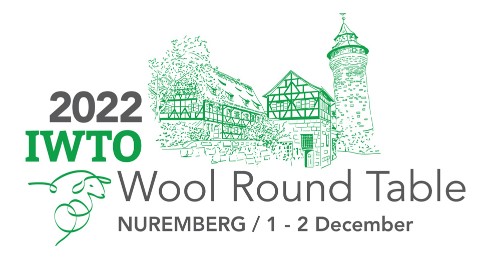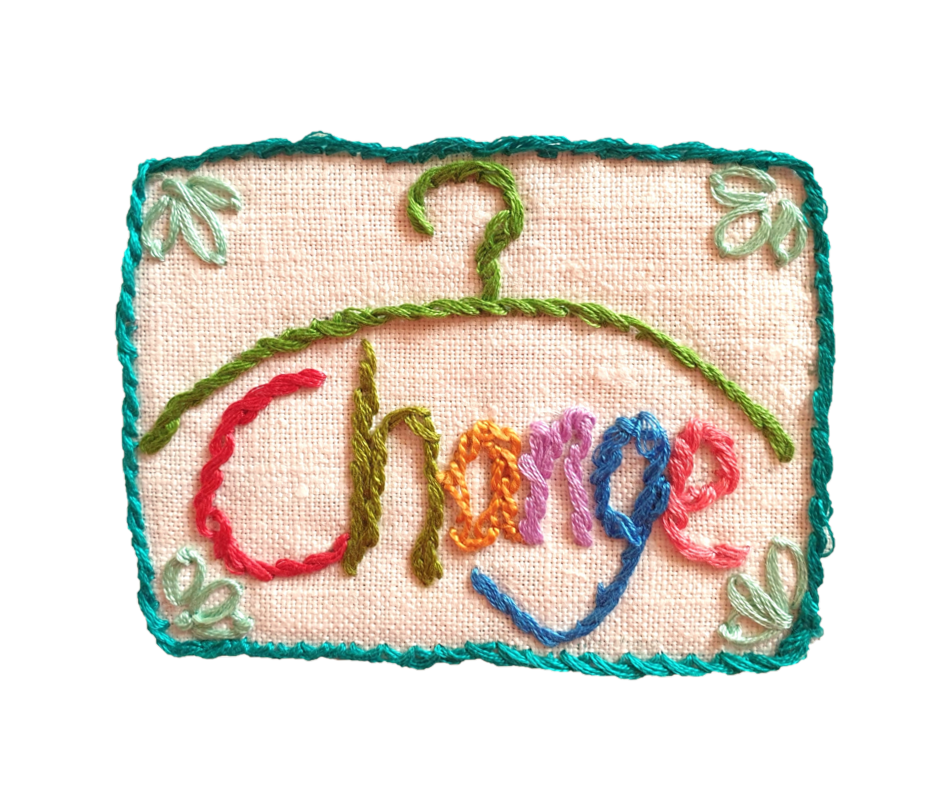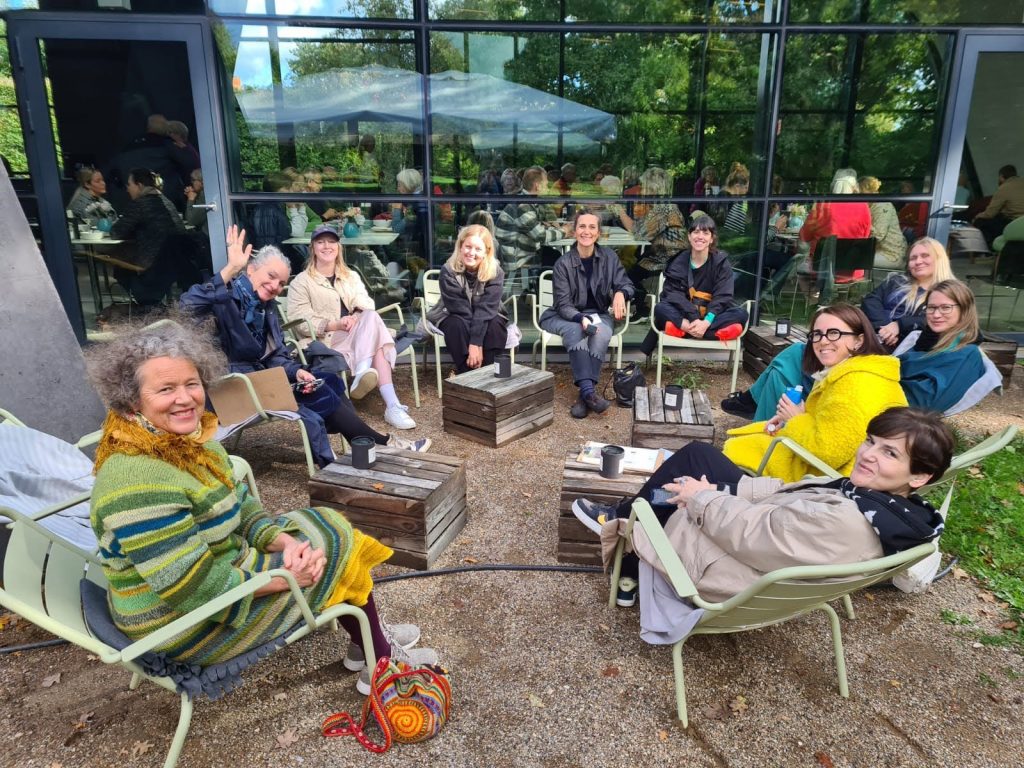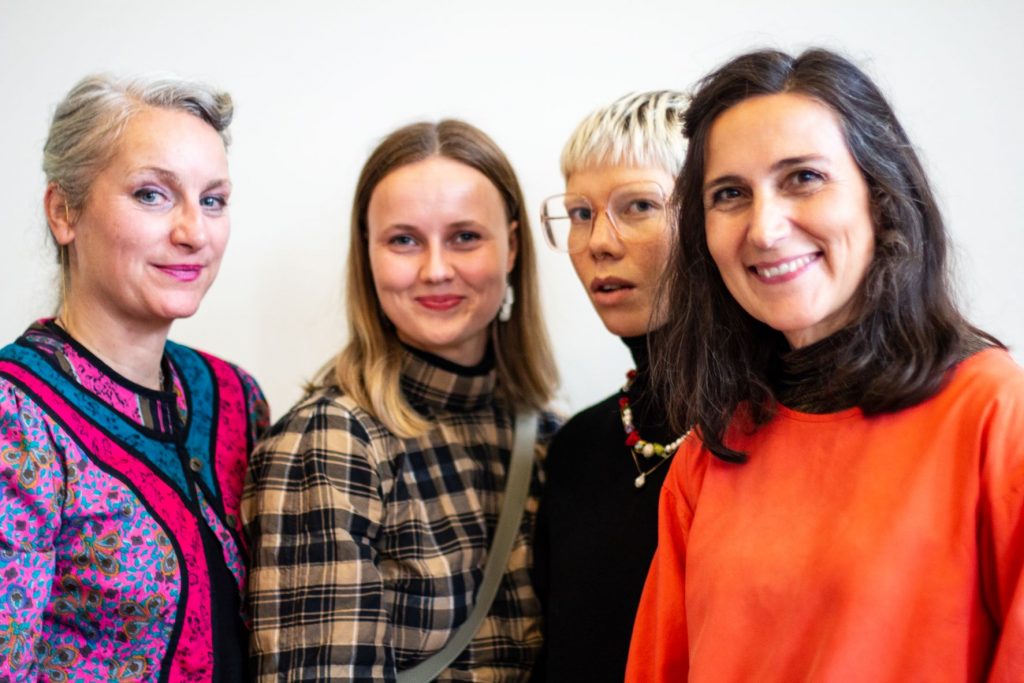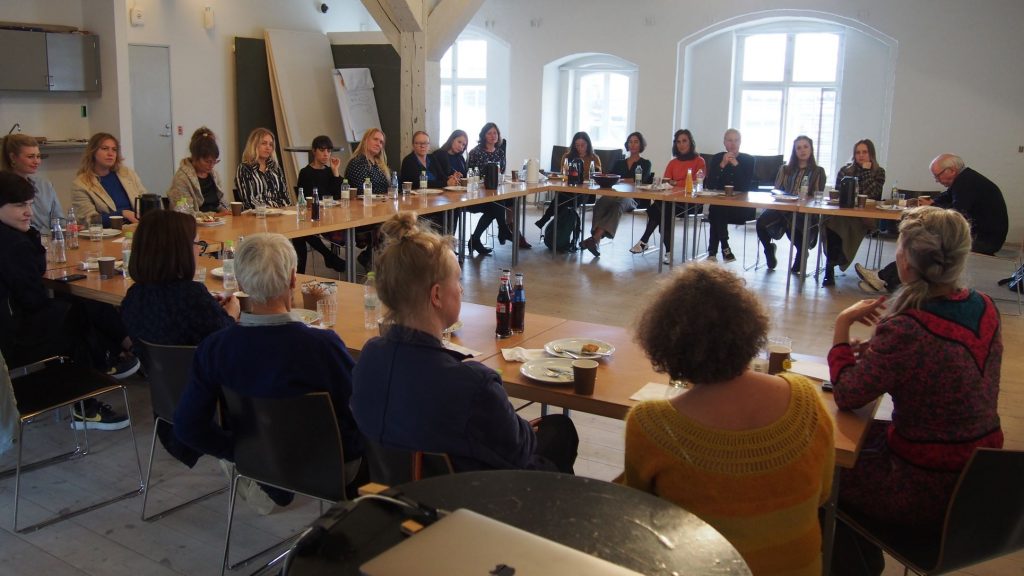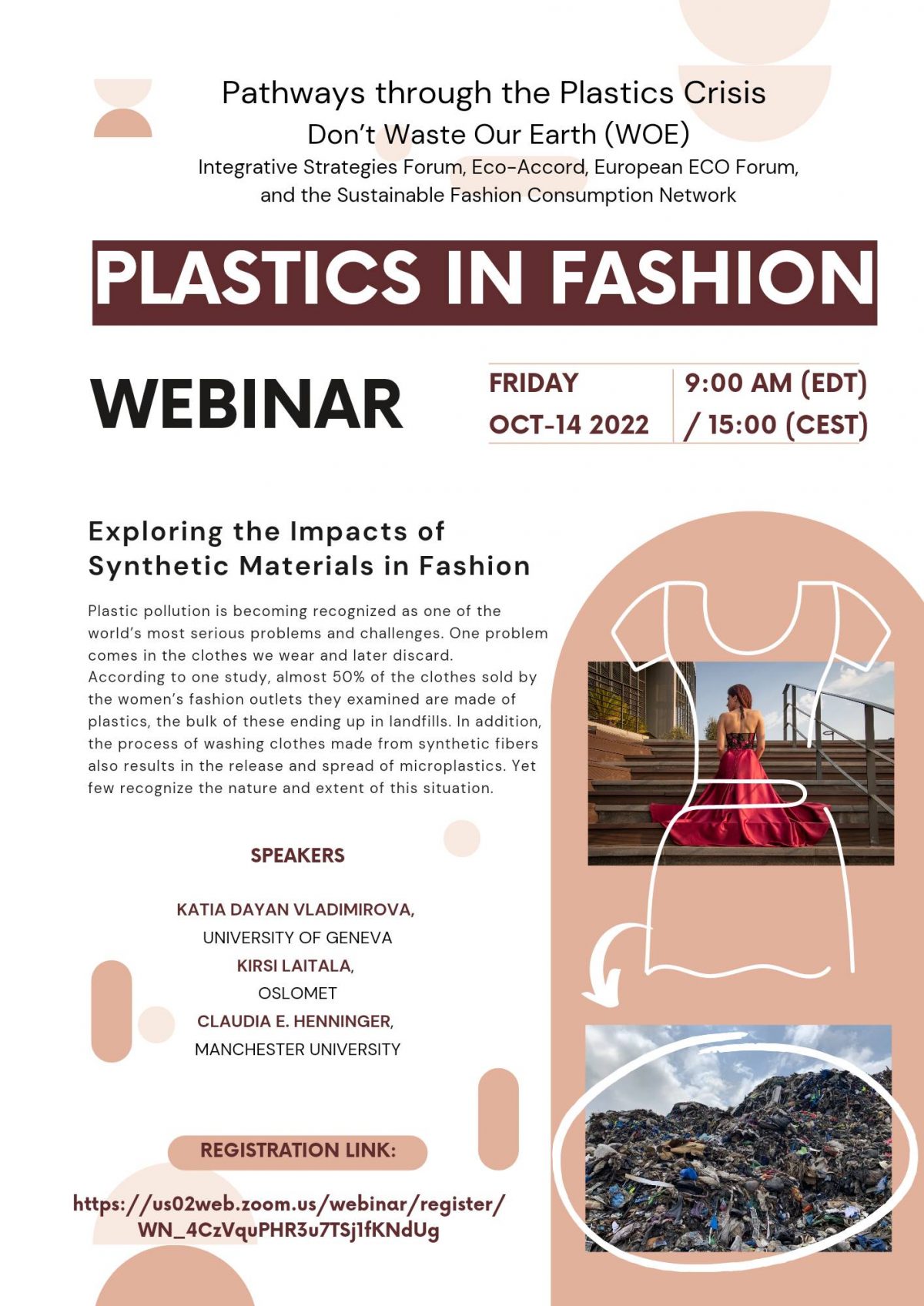Ingun Grimstad Klepp, Tone Skårdal Tobiasson, Ingrid Haugsrud
The UN Climate Change Conference in Glasgow, COP26, is in full swing. The event aims to be carbon neutral. The guests will be served local food and are encouraged to walk, cycle or use public transport. The clothes should also be environmentally friendly. A thousand volunteers have been given a small wardrobe to use during the climate conference. Glasgow City Council boasts of the “stylish uniforms” that are supposed to be made of “sustainable and recycled materials”, but without specifying what or how.
Sustainable materials?
Claims about sustainable materials are easily thrown around. Clothing production is a very complex process with many different stages. Most often, and also in the case of these uniforms, it is unclear what makes them sustainable. In our view, clothes that are called sustainable should be produced locally and with dyes, fiber and other inputs from, for example, regenerative agriculture (i.e. agriculture that builds the carbon content and the soil).
Why not develop a uniform based on local Scottish traditions and reuse?
The initial information released about the clothes did not state what they are made of, but by contacting the manufacturer, we got an answer. The hoodies, polo shirts, jackets and backpacks are all made from 100 percent recycled polyester from plastic bottles. The trousers are made from a mixture of 65 percent of the same polyester and 35 percent organic cotton. They provide no information about dyeing and finishing – the most polluting part of clothing production.
After repeated inquiries, we were told that the uniforms are produced in the UK and in Sri Lanka, but we do not know where the main stages of production is, or what clothes are produced where, nor where the raw materials come from or are processed.
Who will wear the clothes after the conference?
How long products are used, makes the biggest difference for both the climate and the environment. Clothes that you have not chosen yourself, but received from someone who does not know you, are typical garments that see little use. If they also have large logos and other things that make them time- and place-specific, the chance of reuse is small.
It is possible that Glasgow City Council and some of the volunteers think the clothes look nice, but we can safely say we aren’t enthusiastic. They would be better suited for the staff at a petrol station, but it is not the sale of fossil fuels that is on the agenda in Glasgow. However, since the “sustainable” material turned out to be from recycled plastic bottles, i.e. fossil origins, one could easily be fooled.
It is also possible that some of the thousands of volunteers have few clothes, and are happy for a gaudy top hat, black and blue shapeless trousers, a bulky outer jacket, a fleece jacket, polo shirt and a hoodie, but the chance that their closets are already full of similar and better garments is much greater.
In short: the clothes should not have been produced at all and of course not been described as “sustainable”.
A gift to the homeless after the summit
Avoiding waste is a stated goal for COP26, and this should be done through reuse, recycling and by taking design and material choices into account. The manufacturer states that there is a plan for what will happen to the clothes after the event.
The volunteers who do not want to keep their clothes can return them, and they will either be donated to the homeless or torn up and used for energy recovery.
The fact that these clothes can be handed in afterwards if the volunteers do not want to use them, does not make the matter any better. There is no shortage of easily used or unusable clothes for both reuse and energy recovery.
Are plastic clothes good for the climate?
In many of the tools available for comparing climate and environmental impacts of different textile materials, polyester, and especially recycled polyester, are highlighted as those with the least climate impact. At the same time, voices are being raised protesting against these truths, for example in this article in Impakter.
The basis for the comparisons are so-called life cycle analyses (LCA). These analyses aim to show a product’s environmental footprint from raw material extraction to disposal. For clothing, these LCAs are both few and incomplete, and much that can be achieved by choosing strategically among LCAs.
The independent analyst Veronica Bates-Kassatly describes how manufacturers have chosen LCAs that favor synthetic materials, and as a consequence are worst for nature. This is difficult to control, partly because privately owned HIGG Co., with its Material Science Index, the most widely used of such comparison tools, keeps its sources secret.
We would argue that no one knows if polyester is better for the climate, but there are some who stand to make a lot of money from claiming this, and that those who earn the most are the same ones behind this “truth”.
Recycled what then?
What is certain, however, is that polyester, and the other plastic materials used in clothing, are a significant source of spreading micro plastics to the sea, water and air. This also applies to recycled polyester.
None of the plastic-specific problems, the lack of degradability and the spread of micro plastics, are included in the calculations we mention above. PET bottles that are “recycled” into polyester fiber are in themselves a bad idea, according to the Changing Markets Foundation’s report on synthetic materials.
The properties embedded in the plastic used for bottles are not utilized in the clothes, and the bottle-to-bottle recycling system actually works better. The textile fibers deteriorate and therefore cannot be recycled, as one is capable to do with the bottles. This is of course why the manufacturers of these clothes will either give them away to the homeless or deliver them for energy recovery.
Local production as a solution
Scotland has a proud textile history, with Shetland wool, fantastic tweed and tartans – the checkered wool fabrics. Why not develop a uniform based on local Scottish traditions and reuse?
Yes, we understand that the volunteers must be recognizable, but to achieve this you only need one clearly visible garment, or bandola, or a fun hat.
Local production utilizes raw materials better, reduces transport, and not least the clothes stand up over time. The volunteers could have been a colorful flock with playful use of Scottish traditions. Using history as a resource for the future has many benefits, as do natural fibers.
Public procurement
The public sector is a major purchaser. Both the environmental and purchasing expertise of the very many who are responsible for buying textiles are in general a sad state. Therefore, we are currently working with a purchasing guide for public procurement of textiles in Norway.
If such initiatives are to contribute to a reduction in climate impact, they must not be hijacked by misguided ideas about «sustainable materials», but on the contrary, systems must be developed that ensure the procurement of good products that are utilized to the maximum through long use and good care.
To achieve this, good routines are needed for cooperation between buyer, user and supplier. The volunteer uniforms are thus a glaring example of how wrong things can go.
Climate vs. the environment
The climate crisis is serious. But so is the environmental crisis. “Saving” the climate by destroying the environment is not a good idea. Of course, this discussion is not just about clothes. The “emission-free” electric cars are, after all, only “emission-free” if you do not create emissions elsewhere and in other forms. The debate about wind turbines has many of the same ingredients.
Numbers and rankings are important tools in the climate and environmental debate. Therefore, we must be careful about who gets to decide what data is seen as robust and reliable. Things go wrong when the fox alone is allowed to guard the chickens, or the wolf the grandma, so to speak.
We must stop up and not let the same global giants who drown the world with bad plastic clothes also be allowed to drown us in the “truth” that their products are good for us and the planet. “Recycled” plastic clothing will never save the climate, and they are a disaster for the environment.
By the way: We never got to know what the knitted hat that tops it all is made of, but our tip is acrylic. Acrylic does not win any prizes for saving either the environment or for clothes that help to keep the wearer warm. It is possible that the conference had taken into account that global warming would make it superfluous for the hat to be knitted in their warm and wonderful Shetland wool.
Published by www.sciencenorway.no, click here to see the op-ed
